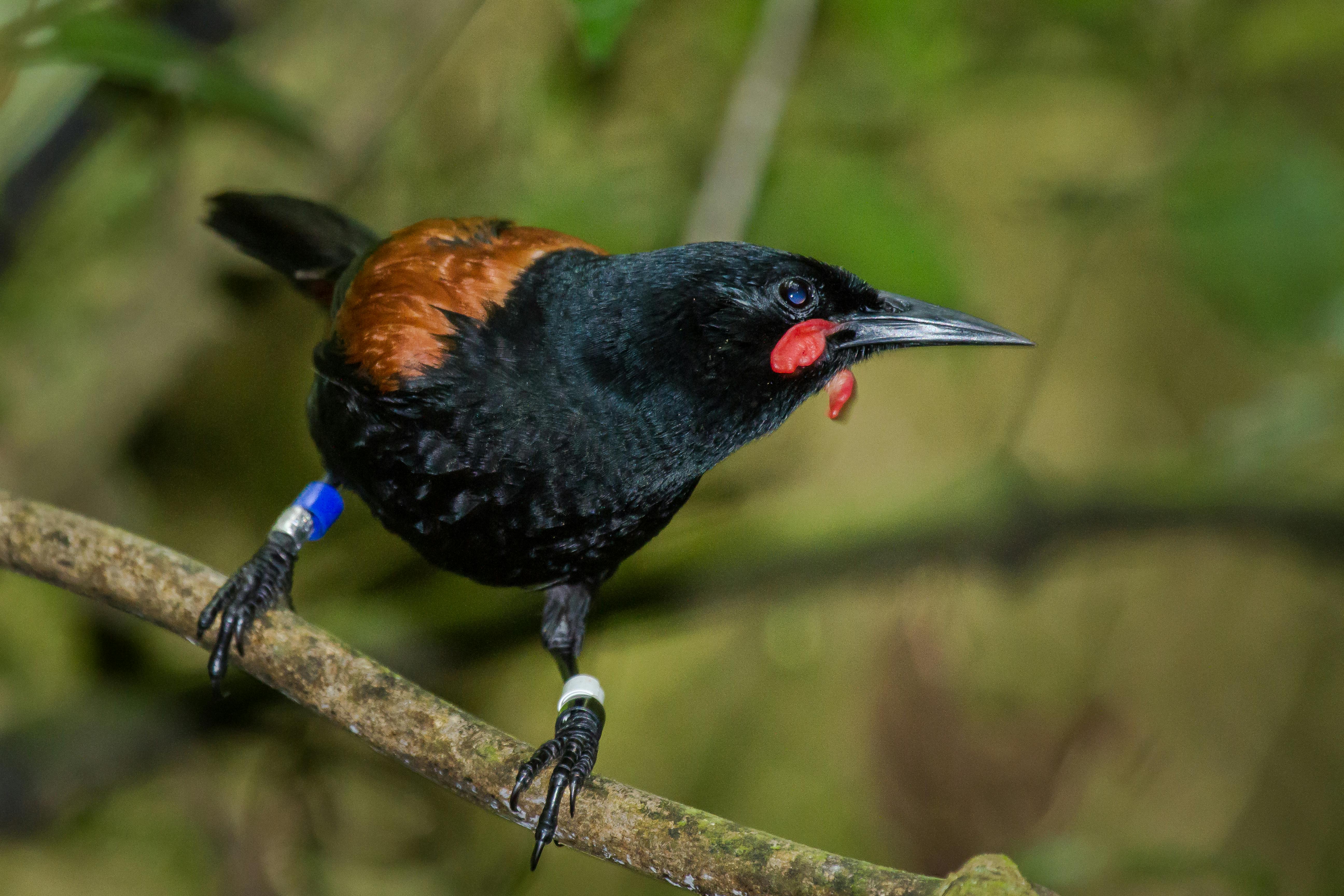You can find this bird in several predator-free mainland island sanctuaries.
Like many endemic bird species, the saddleback (tieke) was an abundant and reasonably common bird when Europeans arrived in New Zealand. But with the subsequent introduction of rats, mice and mustelids, their numbers rapidly declined. By the early 1900s, tieke were confined to one population on Hen Island off the north-east coast of the North Island. Thanks to translocation projects initiated in the 1960s, there are now 15 island populations and five at predator-free mainland sites.
Conservation status
Endemic species classified as ‘recovering’. Population estimates put the total number of birds at around 7000.
Features
The saddleback is comparable to a common blackbird in size, weighing about 70g and measuring around 25cm in length. It has a predominantly black plumage except for a reddish-brown chestnut saddle across its back. Saddleback also possess bright red/orange wattles that hang from the base of their beak and get larger with age. Distinguishing between sexes can be difficult as both look the same – the only noticeable difference is that the males usually have larger wattles.
Call
The tieke’s most common call is a loud chattering ‘cheet te-te-te-te’. Territorial adult males will emit a rhythmical song made up of two to four chirps followed by a series of repeated phrases and notes.
Feathery fact
Tieke often have other species of birds such as whitehead and fantail following along while feeding. They are also relatively weak fliers but make up for it by having strong legs which they use to bound through
and along vegetation.
Nesting
Tieke have a particularly long breeding season compared to most species, running from August right through to the following May. Nests are always built by the female and consist of vegetation in a cup shape sited in tree cavities, rock crevices, tree fern crowns or in dense ground-level vegetation. A typical clutch is two to four eggs and with such a long breeding season, they can rear up to four broods a year, although one or two is the norm. The incubation period of eggs is 18 days and young birds fledge at 24 days old.
Diet
Tieke consume anything from invertebrates through to fruits and nectar. They will use their bill as an anvil to chip away at rotten wood, forage around under cabbage tree skirts, burrow into leaf litter and gather from branches, trunks and leaves.
Bird spotting tips
Tieke tend to move around a lot. If you are in an area where they exist, use your peripheral vision to pinpoint movement. They are also active, noisy feeders so keep your ears open for sounds. Another way they give away their presence is by their frequent calling which is often triggered by disturbances.








